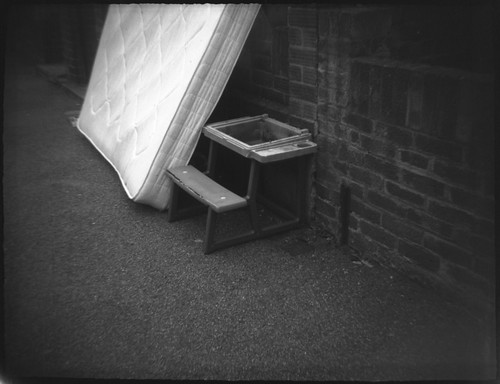 |
| V. P. Twin with Ilford XP2 Super |
With October being announced as the second month this year for the
#ShittyCameraChallenge, I wanted to use a different camera from June's contest, the
Micro 110, and my first thought was to choose the
Elliott V. P. Twin. The V. P. Twin seems perfect for the challenge - no user controls other than the shutter lever, a fixed-focus meniscus lens, a virtually obsolete format, a body made from Bakelite (or a Bakelite-type brittle plastic), and it was once sold in three parts for six old pence each. In my original post on the V. P. Twin, I calculated this to be £3.73 at 2016 prices - and the camera is probably worth hardly any more now; my model of the camera is the post-war version, which was once sold for 7/6, or 37.5 new pence, which would be £6.32 at 2016 prices. This was around the price I paid on a well-known auction site including postage. A handy definition of a 'shitty camera' is one where the camera is worth less than a roll of film: the V. P. Twin takes
127 format rollfilm, and certainly any
new 127 film would cost more than the camera. There seems to be a small resurgence of interest in the 127 format, and a new Rerapan 400-speed black and white film is currently available, as well as Rera Chrome and Rollei Crossbird.
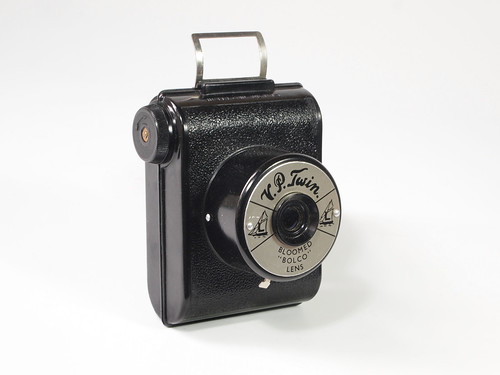 |
| Elliott V. P. Twin |
However, I didn't use any of these films over the week I was shooting with the V. P. Twin. Instead, I had some
cut down medium format
Ilford XP2 Super,
HP5 and
FP4 Plus, rolled with 127 backing paper, as well as some 35mm Kentmere 400. As the V. P. Twin is a snapshot camera and has no aperture or shutter speed controls, whatever film I was using - and these were mostly fast films - the films' latitude was important in order to provide results in a variety of lighting conditions (I did develop the XP2 Super in RO9; C41 process would have been better in terms of latitude for the film). Originally, the camera was recommended to be used for subjects in broad sunlight, of which there was some this October - obviously not as bright as summer sunlight - but I shot with whatever light was available, with mostly acceptable results.
 |
| V. P. Twin with Ilford HP5 Plus |
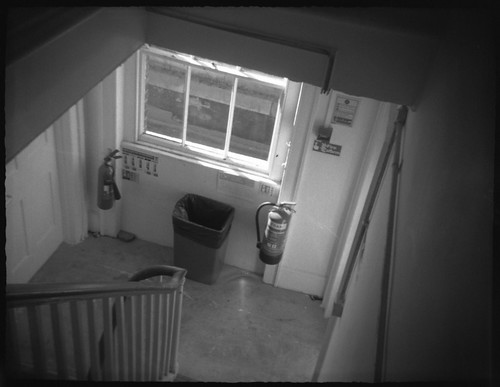 |
| V. P. Twin with Ilford HP5 Plus |
I did attempt a few shots of well-lit interiors, where HP5 gave good results. The photographs I took all demonstrated the shortcomings of the V. P. Twin: the meniscus lens has very visible vignetting and distortion in all images; there was also some camera shake in a few shots (using the camera this month, I noticed that the shutter appears to trip slower in one direction as opposed to the other); film flatness was an issue in some images (most notably with the 35mm film, as this wasn't supported at the sides of the frame); and the framing in a number of the photographs was clearly off - the curved metal viewinder frame of the V. P. Twin is rudimentary at best. All these factors help to qualify the V. P. Twin to be a 'shitty camera'.
 |
| V. P. Twin with HP5 Plus showing camera shake |
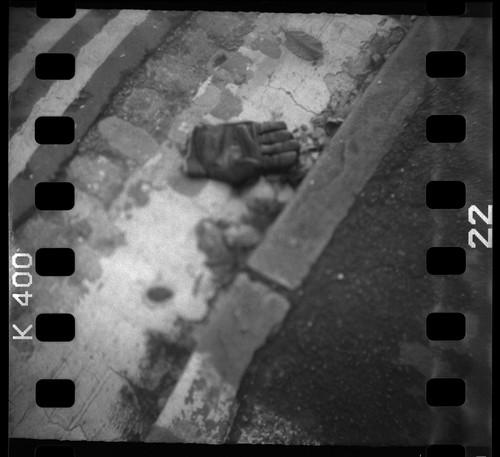 |
| V. P. Twin with Kentmere 400 - out of focus areas caused by lack of film flatness |
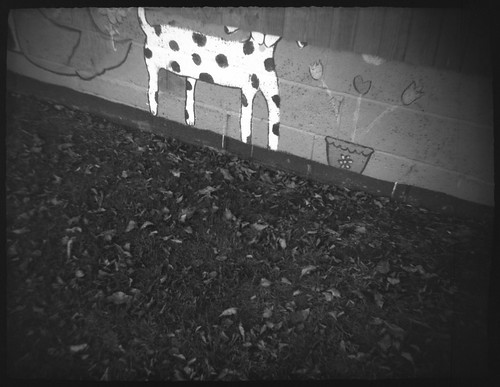 |
| V. P. Twin with Ilford XP2 Super - poorly framed subject |
And yet these factors are part of the charm of using the V. P. Twin - other than the problems with accurate framing, which rarely provides a more interesting composition than the one I was
trying to frame. Ideally, I would have probably shot everything on HP5 Plus, as this would have been the most sympathetic (or C41-processed XP2), but I was just shooting with what I had - what was already cut down and/or rolled with 127 format backing paper for use. Doing this - shooting with what I had - using a simple snapshot camera, over the course of a week, and the results that come out of those restrictions, are one of the chief attractions for taking part in such a thematic 'challenge', and, by doing so, engaging in part of a larger online community of film photographers.
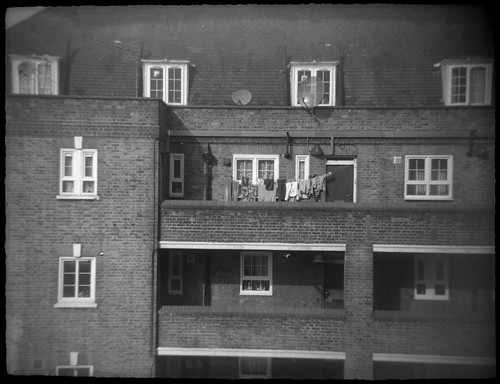 |
| V. P. Twin with Ilford HP5 Plus |
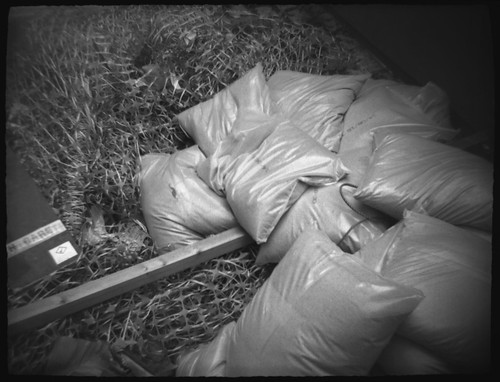 |
| V. P. Twin with Ilford XP2 Super |
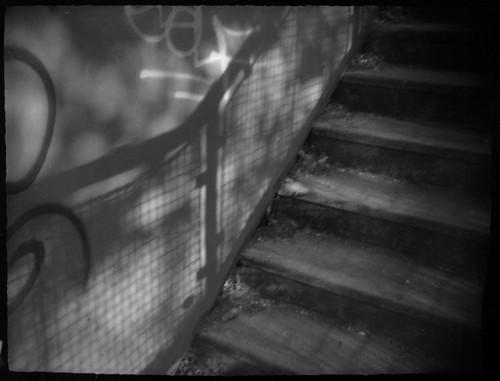 |
| V. P. Twin with Ilford FP4 Plus |
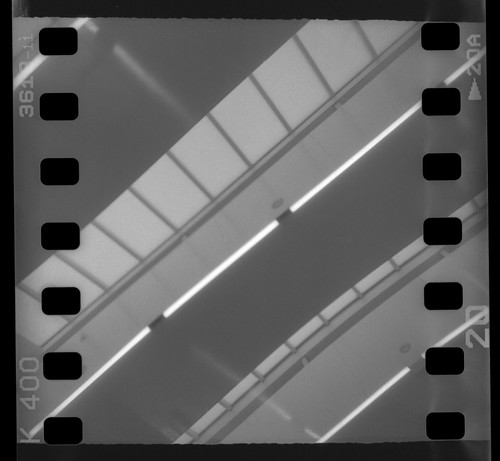 |
| V. P. Twin with Kentmere 400 |
 |
| V. P. Twin with Ilford XP2 Super |












No comments:
Post a Comment